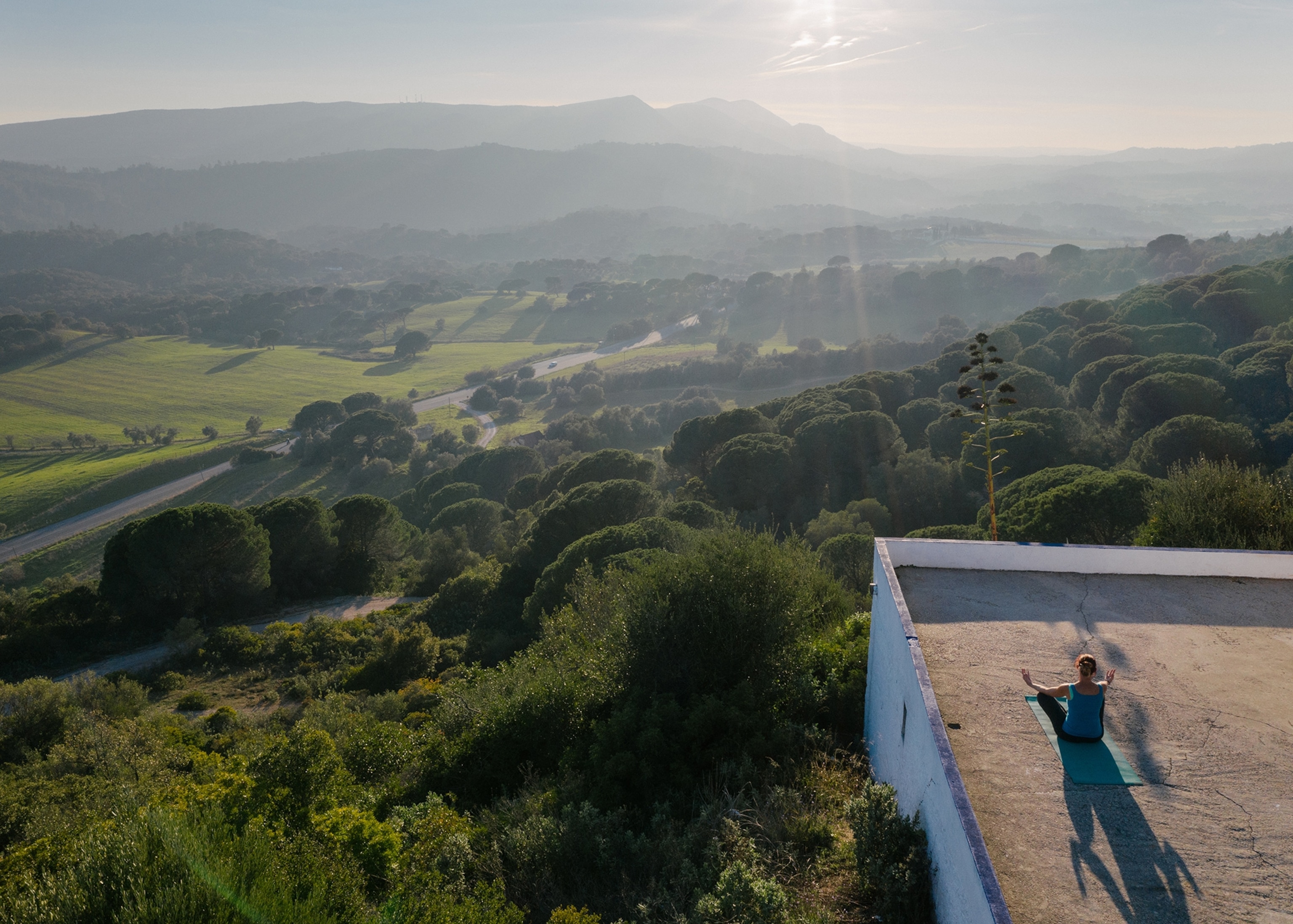
How silence became the newest luxury lifestyle
From silent walking to noise-mitigating architecture, here’s how individuals and cities are pushing back against the roar of modern life—one decibel at a time.
The soundtrack of modern life is nearing a crescendo, from the roar of traffic and leaf blowers to smartphones streaming videos around the clock. This overwhelming cacophony has sent many people searching for an increasingly elusive soundscape: quiet.
“I don’t think we’re wired for the amount of noise we experience or the overstimulation,” says Norway-based psychologist Olga Lehmann, whose work centers on silence. Overexposure to noise pollution—particularly sounds above 85 decibels, roughly the level of a loud restaurant—can lead to hearing loss, high blood pressure, stress, and insomnia.
Some escape the ruckus by traveling for silence, but quiet time at home is just as crucial. “Small pockets of silence in daily life can help us regulate stress and make us less impulsive,” says Lehmann, noting her goal isn’t to drown life’s noise entirely. It's about striking a balance between peace and the chaos of everyday life—and that’s becoming more achievable as a growing quiet movement weaves silence into different parts of our routines.
A quiet counterculture
Few trends have shown the growing quest for quiet, particularly among younger generations, like silent walking, a phenomenon that went viral on TikTok last year as creators raved about the value of strolling sans distractions—no podcasts, music, or phone calls. Despite snark from pre-smartphone generations, the activity’s widespread popularity underscores how starved digital natives are for a break from the noise.
(This day of silence brings a fresh start for Bali’s new year.)
Some quiet-seekers pursue more drastic measures via multi-day silent meditations or darkness retreats. The latter gained significant traction following NFL quarterback Aaron Rodgers’ experience at Sky Caves Retreat in Oregon. These sensory deprivation experiences go beyond the auditory; they immerse participants in total darkness and near-isolation for several days, with the goal of self-discovery and introspection. Lehmann says strenuous options work for some, “but I prefer to start with small challenges.”
It could be as simple as sitting in a local park, museum, or library without technology for 10 minutes, or joining a meditation or yoga—or, better yet, silent yoga—class. No matter the practice, quiet time doesn’t necessarily mean seclusion. “We’re in a pandemic of disconnection and loneliness,” says Lehmann. “That’s what I could call the dark side of silence.”
Socializing in silence
Fortunately, many quiet-seekers pair silence with community. Meetup organizations like Georgia-based Peace in the Wild, which connects Black nature enthusiasts through outdoor recreation, have turned no-talk hiking into a meditative group activity.

Silent Book Club, which brings readers together to read for an hour sans chatter, has recently soared in popularity thanks to social media subcommunities like BookTok and Bookstagram. “We call it the introvert happy hour,” says Guinevere de la Mare, co-founder of the group, which has over 1,000 chapters across 50 countries. “Silent book clubs took off as a way to have low pressure, low stakes ways of interacting with humanity again after the pandemic.”
(How a little silence can go a long way for kids’ mental health.)
Despite the name, Silent Book Club events aren’t entirely devoid of sound. Their meeting spaces, often local cafés, have their own racket—but a handful of no-talking coffee shops in Japan show that noisy cafés don’t have to be the norm. The latest, the new Shojo quiet café in Osaka, is run largely by deaf or hard-of-hearing individuals. The venue fosters a tranquil, no-chatter ambiance; patrons use sign language, handwriting, and pointing to order fare.
Low-volume haunts are trickier to find in the U.S., but not impossible. Starbucks, for example, recently announced it’s introducing noise-absorbing ceiling designs, known as baffles, in over 1,000 stores. The “Yelp for quiet restaurants” platform Soundprint lets users measure and share sound levels at establishments, from coffee shops to nightclubs, around the world. Over 1,000 noise-measured hangouts appear on its global map, ranking from quiet (below 70 decibels) to very loud (above 81 decibels).
Improving city soundscapes
Digital detoxes and quiet haunts only get you so far, especially in loud cities, where over 50 percent of the world’s population resides. The World Health Organization named noise pollution a leading environmental trigger for health issues, topped only by air pollution—a fact that’s not surprising given urbanites are chronically exposed to noise above 85 decibels. In addition, the U.S. National Park Service estimates that noise pollution more than doubles every 30 years—and it’s rising faster than the country’s population.
“The main issue in cities is always road traffic noise; that’s why a lot of people are pushing the idea of electric vehicles,” says Francesco Aletta, an architect, urban sound planner, and lecturer at University College London. EVs are significantly quieter than fossil fuel-powered cars at lower residential-area speeds. On highways, where the roar comes from tire noise, city officials are adopting quieter technologies for asphalt, Aletta says.
(Discover the planet’s last few “naturally quiet“ places.)
Unfortunately, action at the government level requires time and red tape—particularly in places like the U.S., where noise-exposure research remains widely understudied and under-regulated. But cities are showing slight signs of progress. Last year, the New York City Council installed noise cameras to track vehicles that break the city’s 85-decibel limit. Rules limiting loud gas-powered leaf blowers are quieting urban and suburban areas across the country, from Washington, D.C. to Portland, Oregon.
Greenery can play a role, too. Planting rows of trees on highways reduces noise by up to 12 decibels. And living walls, like the 30,000-plant exterior on an office building in Dusseldorf, Germany—the largest green façade in Europe—soak up noise while minimizing urban heat.
One technology Aletta predicts will continue society’s call for quiet: wearables, such as Apple Watches, that alert users to environmental noise levels. “The moment you start monitoring and becoming aware, you take action,” he says, noting recent progress, like Wales passing a law to protect soundscapes alongside clean air, which gives him hope. “I take these kinds of policies and these new pieces of legislation as a good signal that the tide is changing.”








